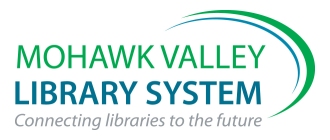 |
START WITH SCIENCE KITS
Science Programs for Children Ages 4 and 5 |
Objectives
- Students will develop an understanding of change over time.
- Students will learn how fossils are evidence of the diversity of organisms developed over geologic history.
- Students will develop an understanding of properties of Earth materials, such as water and gases.
- Students will learn about the properties of rocks and soils, such s texture, color, and hardness.
|
Books : (In kit)
- Geology Rocks! by Cindy Blobaum
- Digging Up Dinosaurs by ALIKI
- Monster Bones by Jacqui Bailey
- Hands-On Earth Science for Elementary Grades by Phil Parratone
|
Equipment : (In kit)
- 1 Bag fossil shark teeth
- 24 Piece fossil collection (each in sealed bags)
- 1 Mold – a – Saurus
- 4 Pieces of Geode in a box
- 24 Fossil molds (clear plastic)
- 1 Rock Study Kit (15 rocks)
- 1 Mineral Study Kit (15minerals)
- Video: I Dig Fossils
- Basic Fossil Kit
|
Bookmarks : (In kit)
Paper copies of the bookmark are included in the kit. PDF and JPEG copies are available here.
- PDF – 4 bookmarks per page. Ready to print in color.
- JPG – single high quality jpeg image.
|
Program
- Objectives
- Students will develop an understanding of change over time.
- Students will learn how fossils are evidence of the diversity of organisms developed over geologic history.
- Students will develop an understanding of properties of Earth materials, such as water and gases.
- Students will learn about the properties of rocks and soils, such s texture, color, and hardness.
- Introduction
- Vocabulary
- Fossil – the mark or remains of a plant or animal that lived thousands or millions of years ago. Fossils include leaves, shells or skeletons that were preserved after a plant or animal died.
- Minerals – a substance taken from the earth, but was never alive.
- Geology – the study of the earth, looking at how the earth was formed and how it changes.
- Geologists – person who studies rocks, soils, mountins, rivers, oceans, caves and other parts of the earth.
- Extinct – when every one of its kind has died. It may become extinct due to changes in its environment, either natural or man-made, or it just failed to produce any more offspring.
- Igneous rocks – form when hot magma from the earth comes to the surface, cools and solidifies.
- Sedimentary rocks – consist of materials that once were part of older rocks or of plants and animals. These usually accumulate in layers.
- Metamorphic rocks – rock that has changed its appearance and sometimes its mineral composition, by extreme pressure or heat. Both sedimentary and igneous rocks can later become metamorphic rocks.
- Program
- Digging for fossils
- Fill the trays with dirt.
- Bury the shell fossils in the dirt for students to find. If the students are skilled enough to follow some directions, continue on from here in a more correct archeological manner of creating a grid for clear identification of location of the fossil discovery.
- Use string to make a grid over the tray.
- Draw a copy of the grid on the board or on paper.
- Have students look through the dirt to find fossils.
- Have the students mark on the board in which part of the grid they found fossils ( use an X or picture to mark the spot)
- Use sheet to identify each of the specific fossils.
- Create fossils
- Dirt can be used to press into the dinosaur molds or footprint molds.
- Look at them afterward to see how the finished “fossil” looks compared to the molds.
- Examine fossils
- Pass around the real fossils and have students guess what they are.
- Have students guess if the fossils are of animals or plants.
- Each fossil has a card describing what it really is. Use the cards as a basis for factual information on each fossil.
- Examine minerals
- Take a mineral out of the tray. Read its name and pass it around. Have students come up with a list of words to describe it. Use porcelain piece or nail for scratch test to see which is harder. Other objects can be used as well.
- Could minerals be found when looking for fossils? (Yes, but not as a fossil.)
- General
- Thought Questions
- Are all types of animals that were once living, still alive? (Dinosaurs, dodo bird, carrier pigeons)
- How do we know that dinosaurs ever existed? (Fossils, bones)
- Is a fossil the same as a bone? (No, a bone was living, a fossil is the mark left from the bone)
- Are all rocks the same? (No. Sedimentary, metamorphic and igneous – each is formed in a different way)
|
Consumables
Resource Books: (Contact your local library to borrow)
- Blobaum, Cindy. Geology Rocks!: 50 Hands-On Activities To Explore The Earth. Williamson Publishing, 1999.
- Russell, William. Rocks And Minerals. Rourke, 1994.
- World Book. Fossils Of The World ( World Book’s Science & Nature Guides) World Book, 2005.
|
Evaluation
Please print this evaluation, complete it and return to MVLS in the SWS red envelope.
Topics | About the Kits | Lending Policy

